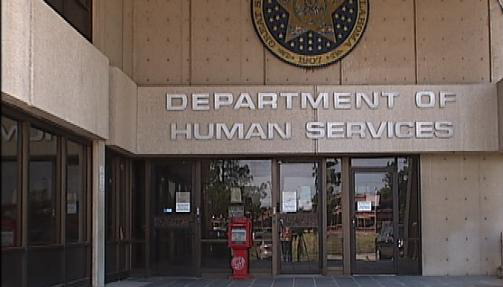Oklahoma City — The Oklahoma Department of Human Services, facing a more than $100 million shortfall in its current fiscal year budget, announced $45 million in reductions the agency is beginning to make. DHS warned that supplemental funding will be needed early in the next calendar year for the agency to make it through the fiscal year without serious consequences.
“We have been upfront with legislative leaders all year long about the DHS budget, our increasing costs, and the limitations we face when trying to make reductions,” said DHS Director Ed Lake. “It is fiscally impossible to reduce $100 million out of our budget without putting thousands of vulnerable Oklahomans at risk.”
At the end of the legislative session, Lake said there was an agreement and expectation by legislative leaders that DHS would not make cuts to Medicaid programs that provide home-based care to older Oklahomans and persons with disabilities; however, there was also an expectation that DHS request supplemental funding to help bridge the significant budget gap that would result. Lake said even with the $45 million in budget reductions, by Spring of 2017 the agency may not have the ability to make payroll or pay contractors that provide direct care to the thousands of Oklahomans the agency serves.
Lake explained the majority of the DHS budget is obligated, restricted by legislation or devoted to child welfare services. Funding for those purposes cannot be cut without jeopardizing its core safety net programs and the related loss of hundreds of millions of federal dollars, and impacting the agency’s efforts to make court-ordered improvements in the foster care system. While the agency will be making significant cuts within portions of the budget over which it has control, those reductions will not be enough to make up the total budget shortfall.
DHS is currently serving Oklahomans with operating expenses of $755 million state dollars. The agency was appropriated $652 million for state fiscal year 2017 which is $27 million less than the previous year. DHS’ current operating level includes $46 million in unfunded higher costs relating to serving kids in state custody, absorbing reduced federal Medicaid funding for a third consecutive year, and for providing child care subsidy services to support low-income working families.
Lake said he and his leadership team have labored before, through and beyond the legislative session over every line item, contract, and position to identify reductions to the 2017 budget.
These reductions come on top of the $35 million in cuts to the agency’s initial 2016 budget and an additional $44 million in cuts from back-to-back state revenue failures during the past fiscal year. Lake said final 2017 budget decisions have been delayed until learning of the final tally of 2016 state funds to be returned from the revenue failures. If DHS receives any of these funds, Lake anticipates the agency will be able to avoid some significant service cuts being considered, but the amount that may be returned is not expected to be nearly enough to avoid additional layoffs of staff, service cuts, and hundreds of contract reductions or eliminations.
Budget cuts detailed
As with last year’s cuts, DHS has again looked internally first to identify the majority of the budget reductions; however, client benefits and services are being reduced as well. Of the $45 million state dollar reduction ($72.8 million with the loss of federal funds), 66 percent will come from additional personnel and administrative reductions, 30 percent from client services and benefits, and 4 percent from contracts.
The agency has begun streamlining and consolidating a number of administrative functions statewide including human resources, purchasing, and training; and has reduced units and entire offices that were not core to the DHS mission. Since 2014, DHS has also worked to reduce energy expenses to protect funding for critical client services. Through these efforts, DHS has saved more than $1 million in energy costs from the previous fiscal year.
DHS will file a plan for an involuntary Reduction-In-Force (RIF) which is estimated to reduce an additional 91 positions. Including this round of reductions, DHS will have cut more than 900 positions since the start of the last fiscal year. Counting the past two fiscal years, DHS has reduced more than 1,200 non-child welfare positions, approximately one quarter of its workforce outside Child Welfare Services. Currently, the agency has nearly 6,900 employees in offices all across the state–more than 40 percent of whom work in Child Welfare Services.
DHS is reducing most contracts with outside vendors yet again, while some contracted services are being phased out or eliminated altogether.
“I would like to thank all of our contractors and partners who have continued to stand by us through multiple years of contract reductions,” said Lake. “Community organizations, district attorneys’ offices, landlords, providers, and a host of other partners have taken reductions each year and they continue helping us fulfill our mission to serve vulnerable Oklahomans. We could not do our work without all of these partners and I cannot express our gratitude enough.”
Lake said he also worries about the effects these cuts will have on clients and staff. DHS offices around the state are already stressed from previous personnel cuts which have caused longer wait times and higher frustration levels between clients and workers. These additional cuts will only exacerbate those situations.
“Our employees have endured so much stress through these continued workforce reductions and yet somehow they maintain their commitment and compassion for their friends and neighbors in communities all around the state who need our help. I am so proud of how they continue to pull together during these tough times.”




Be the first to comment on "DHS announces budget cuts for state fiscal year 2017"